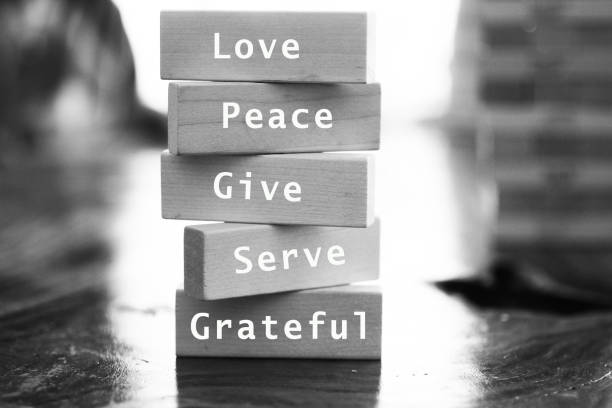Kindness isn’t just an action.
It’s a story we tell ourselves — and one that fiction has been telling long before psychology caught up.
From Mr. Darcy’s quiet admiration to Atticus Finch’s calm integrity — from Elizabeth Bennet’s bold warmth to Rhett Butler’s reluctant affection…
Fiction doesn’t just reflect kindness. It defines it.
And in digital interaction — whether in romantic messaging or brand storytelling — the way we express care often borrows from literary rhythm.
In this guide, we’ll explore:
- Why emotional presence beats performance
- How fictional characters shape our real-life expectations
- Real-world examples from WhatsApp to TikTok DMs
- And what psychology says about how people respond to soft energy
Let’s dive into How Fiction Shapes Our Understanding of Kindness — and discover why sometimes, the most powerful message isn’t clever…
It’s borrowed from time.
The Emotional Science Behind Literary Influence: Why We Mirror Fictional Characters
We assume that attraction comes from confidence — but research shows otherwise.
According to studies published in Social Psychological and Personality Science , users form stronger emotional bonds when messages feel emotionally aligned — not aggressive.
That means:
A flirty opener like
“You’re beautiful.”
Might get noticed — but won’t last.
While a line like
“Your presence seems rare — wanted to keep things warm between us.”
Can replay in someone’s mind for days.
Because real chemistry builds best behind curiosity , not clarity.
And sometimes, the strongest move in digital interaction…
Is borrowing tone from literature — and making it feel real.
5 Ways Fiction Teaches Us to Be Kind (Without Trying Too Hard)
Here’s how classic storytelling reshapes modern behavior — and why soft speech feels timeless.
1. Channel Mr. Darcy: Calm Admiration That Feels Earned
Instead of saying: “I’m falling for you.”
Try: “Your energy makes me rethink what connection feels like.”
One feels robotic.
The other invites curiosity.
Because in modern flirting and branding alike…
Tone beats urgency. Silence speaks before sound.
2. Channel Elizabeth Bennet: Witty Curiosity Over Boldness
Playfulness reduces pressure — and makes polite messaging feel less formal.
Try These:
“Are you always this interesting — or did you practice?”
“Now I’m curious what else you’d say if we had more time.”
Avoid sarcasm that feels sharp — keep it light.
Because real charm doesn’t shout.
It smiles through text.
3. Channel Atticus Finch: Thoughtful Words That Build Trust
If she mentions being thoughtful or guarded — respond with understanding.
Example: “No rush — just wanted to say hi again.”
“I appreciate how calm you seem — take your time.”
This shows emotional maturity — which is far more attractive than intensity.
4. Channel Hamlet: Depth Without Drama
Even if you’re building real rapport — avoid diving into deep topics too soon.
Save them for later — once trust builds.
Because real emotional depth begins with lightness — not weight.
5. Channel Rhett Butler: Boldness With Restraint
People navigating multiple conversations often respond better to light, steady energy — not dramatic declarations.
Avoid lines like: “You deserve better than anyone ever gave you.”
“What are you really looking for?”
Stick to: “Your presence makes me rethink what chemistry feels like.”
“I think my phone cracked when I saw your picture. Worth it.”
One creates pressure.
The other builds presence.
Real-Life Examples: When Literature Sparked Something Real
Let’s look at real cases where literary tone won over loud charm.
The Match Who Said Less — and Got More
He sent:
“Your bio made me curious — wanted to say hi back.”
She replied instantly:
“Now I’m wondering what caught your attention…”
💡 Why It Worked: He led with respect — not pressure.
His message felt warm, not forced — and she responded because of it.
The DM That Felt Like a Gentle Knock
She messaged him with:
“I admire how calm you carry yourself — wanted to keep things warm between us.”
He replied: ✅ Sent a voice note — no delay.
She said:
“That made me smile longer than intended — even though it’s gone now.”
Why It Mattered: He matched her energy — and gave space for emotion to build.
Because real chemistry forms best when silence is part of the conversation.
The Coffee Shop Encounter That Led to a Second Date
He offered to buy her coffee — not as a move, but as a natural extension of their chat.
She appreciated the gesture — but even more, she appreciated his follow-up:
“I hope that wasn’t weird — I just wanted to keep the conversation going.”
That honesty earned him a second message — and eventually, a second date.
How to Use Literary Energy in Your Messaging Strategy
Want your words to build trust — not tension?
Here’s how to craft emotionally intelligent messages that stick — and how to pair them with purpose-driven tone.
1. Lead With Lightness
Instead of pushing for interest, invite conversation.
Try These:
“What’s something most people miss about you?”
“Still smiling from our last chat — no rush on replies.”
These lines show interest — not intention.
And sometimes, curiosity sparks chemistry better than bold openers ever could.
2. Use Humor That Disarms Tension
Playfulness reduces stress — and makes politeness feel less formal.
Good Examples:
“I promise to stop trying so hard to impress — after this message.”
“I wasn’t going to flirt today… but clearly, I failed.”
Avoid sarcasm that feels sharp — keep it light, not lazy.
Because real charm doesn’t need edge to land well.
3. Acknowledge Boundaries Before Testing Them
Some people need space to process. Others thrive on directness.
So instead of chasing, try pausing.
Try These:
“Now I’m going to give you space — but wanted to keep things warm.”
“I appreciate how easy it is to talk to you — take your time.”
This shows control — and builds comfort.
4. Let AI Enhance — Not Replace — Your Voice
AI tools can help draft messages — but only if you adjust them afterward.
Use AI suggestions as a starting point — then personalize them.
Because sociolinguistically, people respond to authenticity — not automation.
5. Don’t Confuse Politeness for Weakness
Manners aren’t submission — they’re confidence expressed through clarity .
If you lead with: “I admire how calm you carry yourself.”
Or: “Your presence feels rare — wanted to say hi again.”
You’re not playing small.
You’re seaking with strength — and subtlety.
And that’s exactly what makes the line memorable.
Frequently Asked Questions (FAQ)
Q: Do women notice subtle flirty messages?
A: Absolutely — especially when they match her energy and avoid pressure.
Q: Should I use AI to write my openers?
A: Only if you personalize them afterward — AI can suggest, but only you can match emotion.
Q: What if she ignores my message?
A: Don’t panic — give her time. Silence doesn’t always mean disinterest.
Q: Can I flirt without sounding desperate?
A: Definitely — focus on warmth over urgency.
Q: Is it okay to mention that I noticed her energy?
A: Yes — and often preferred over appearance-based comments.
Final Thoughts
Flirting has never been about volume — it’s always been about presence .
And now, thanks to the power of digital communication…
The best messages aren’t shouted — they’re spoken like literature.
So next time you send a message…
Don’t just ask:
“Did she read it?”
Ask:
“Did it land softly — or strike too hard?”
Because the most attractive thing you can do…
Isn’t always a flirty line.
It’s a sentence that makes someone feel safe enough to reply.
And sometimes, that’s all it takes to turn quiet admiration into real connection.





